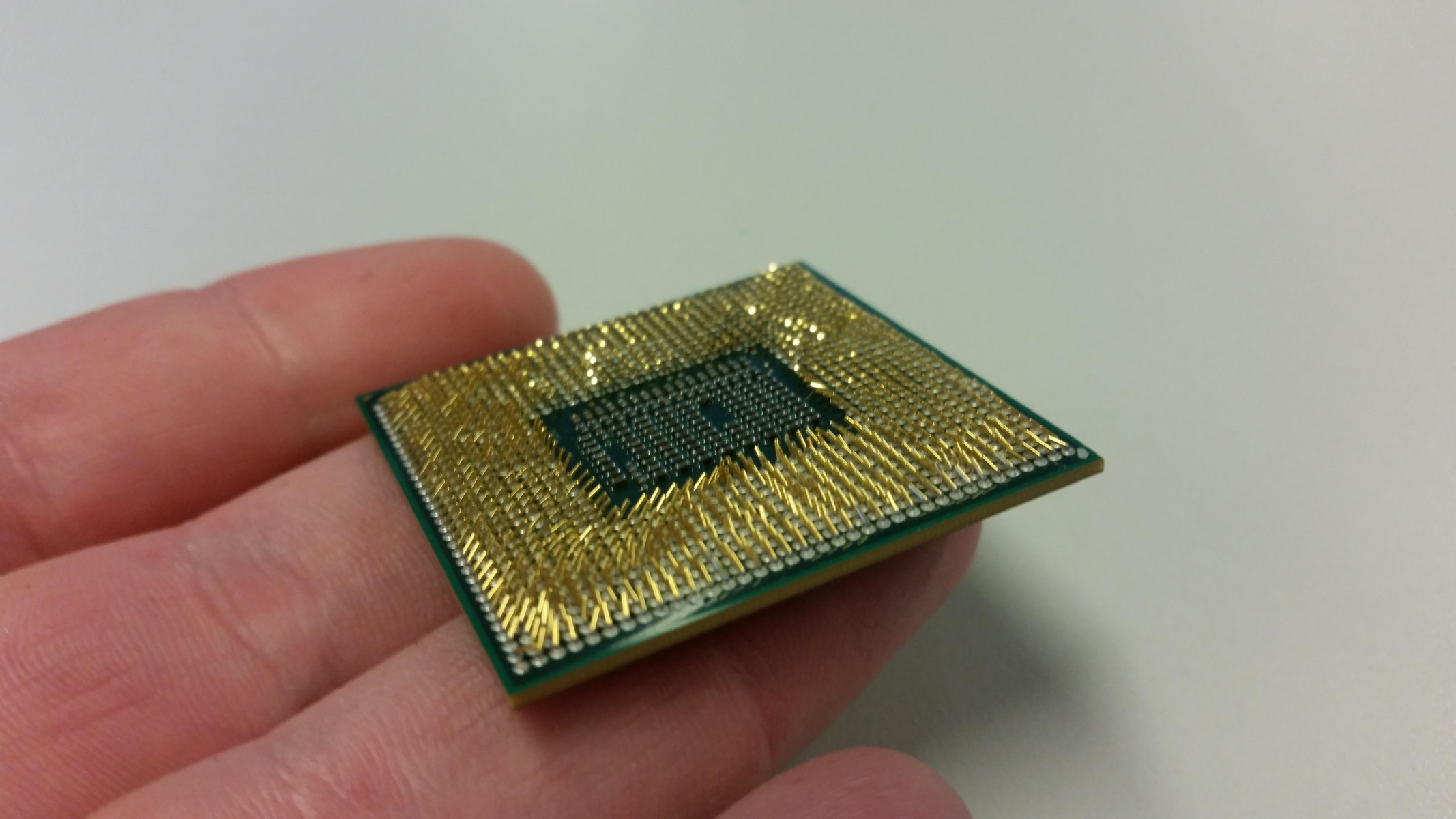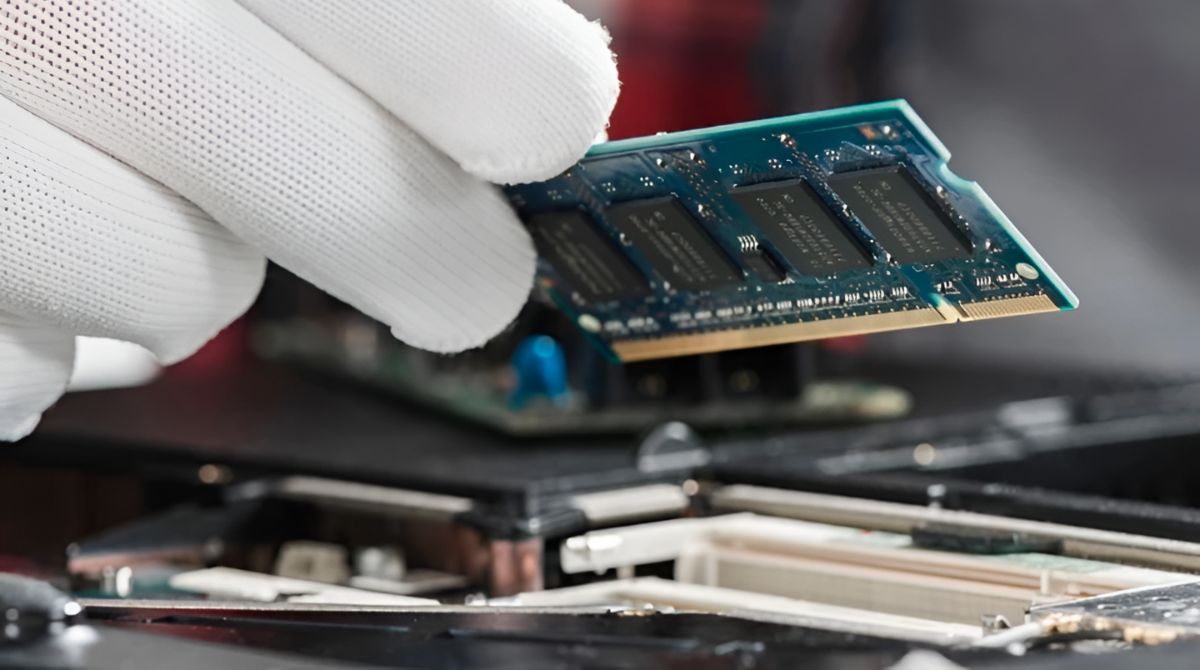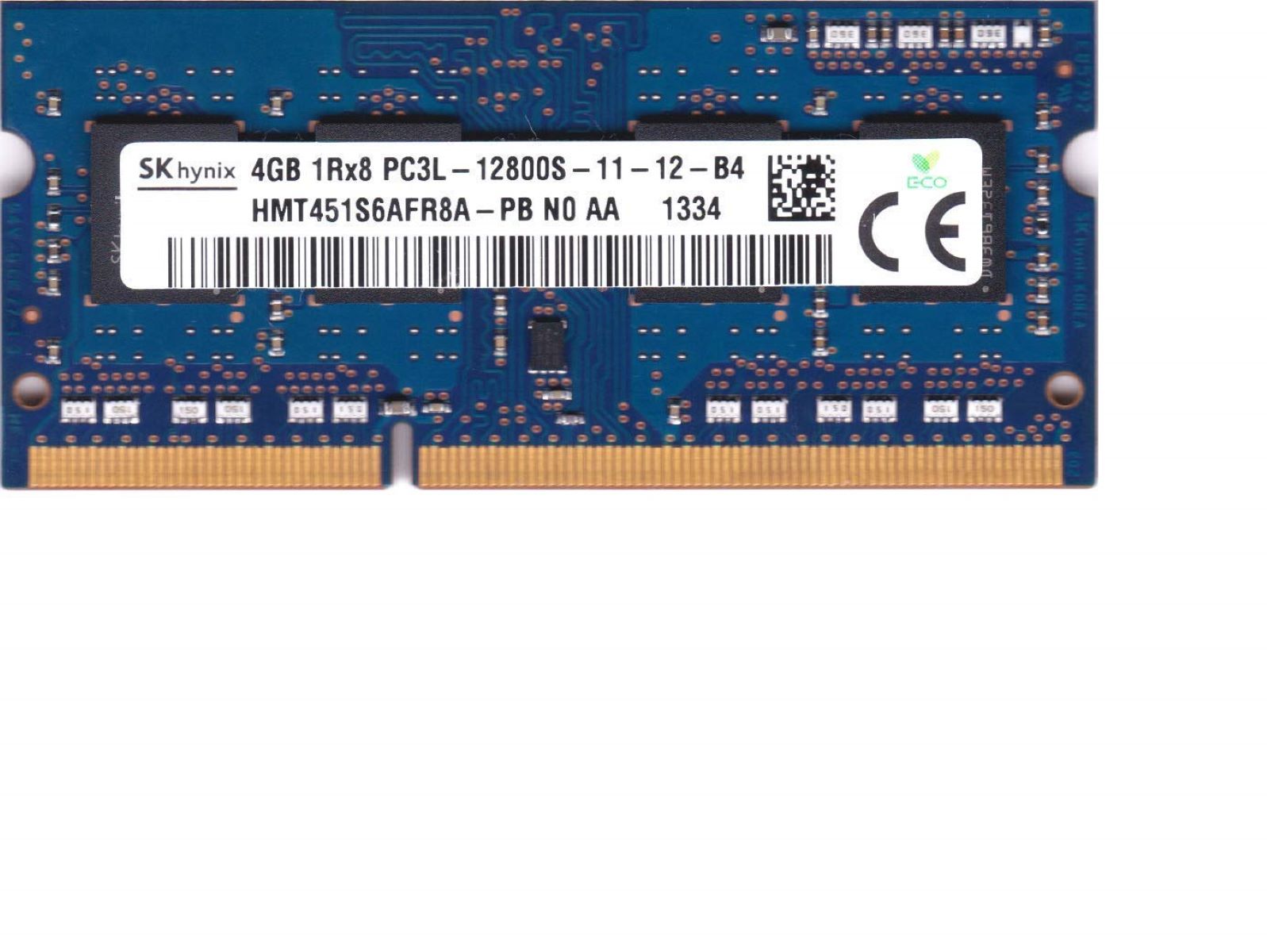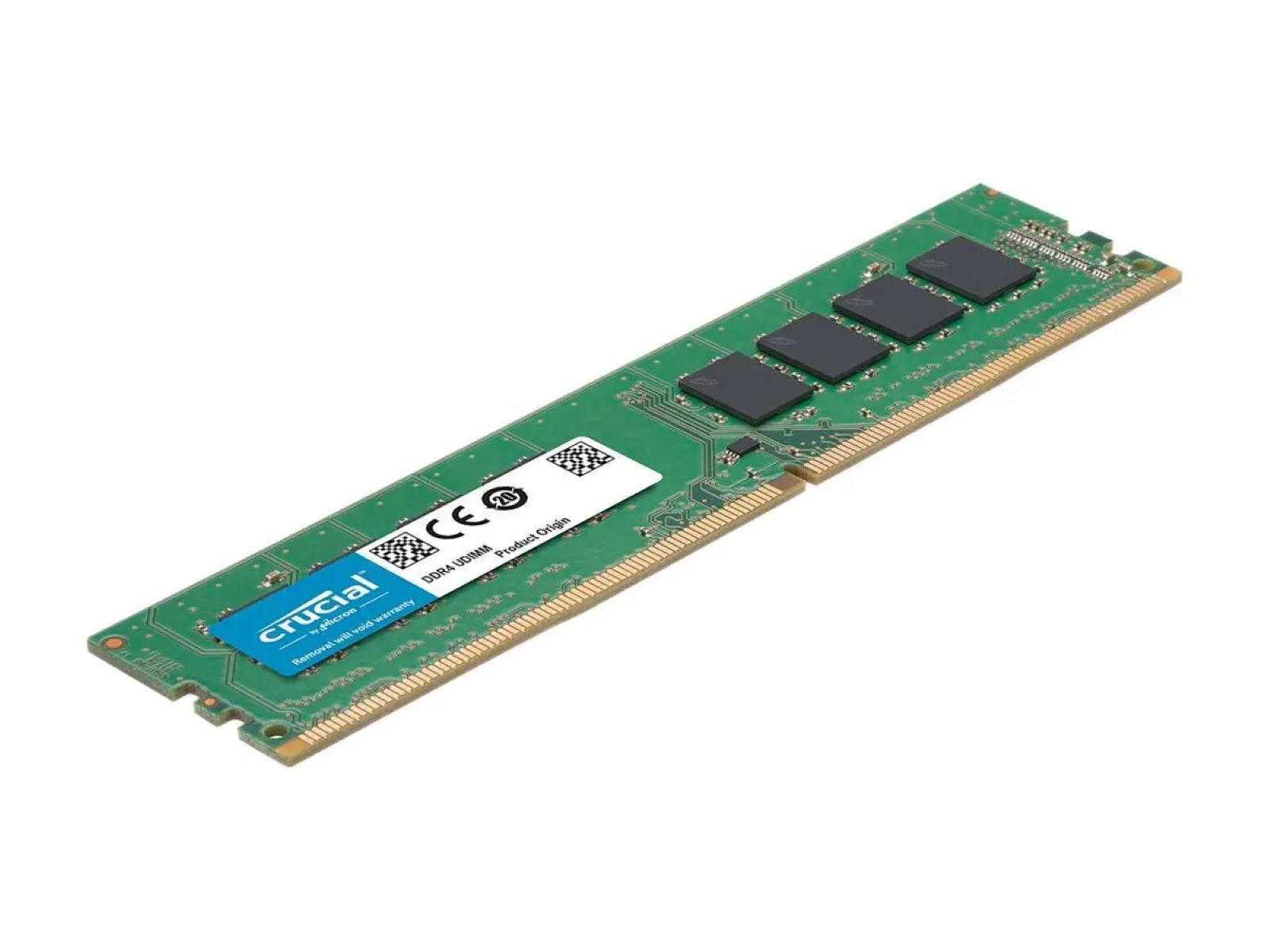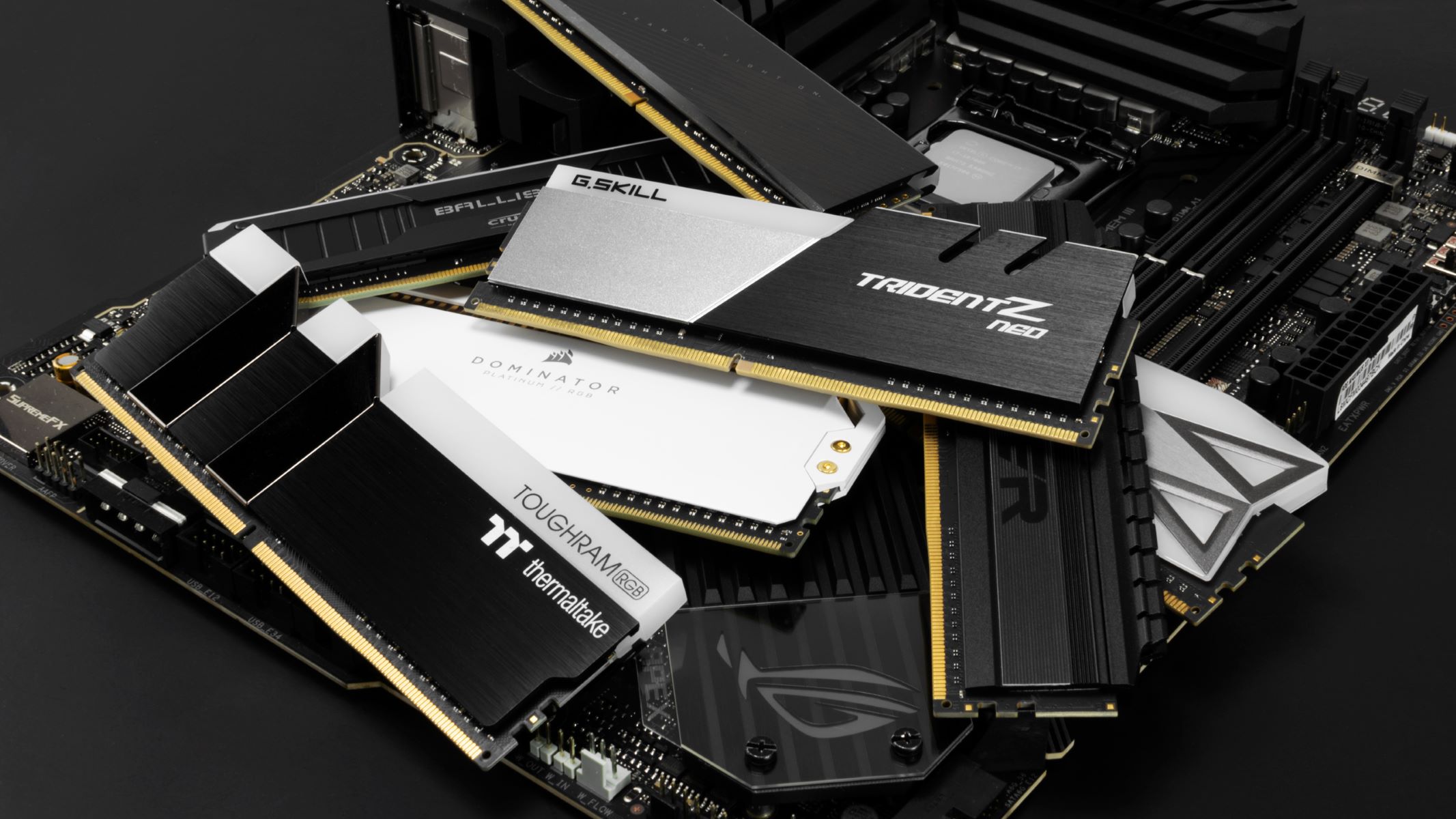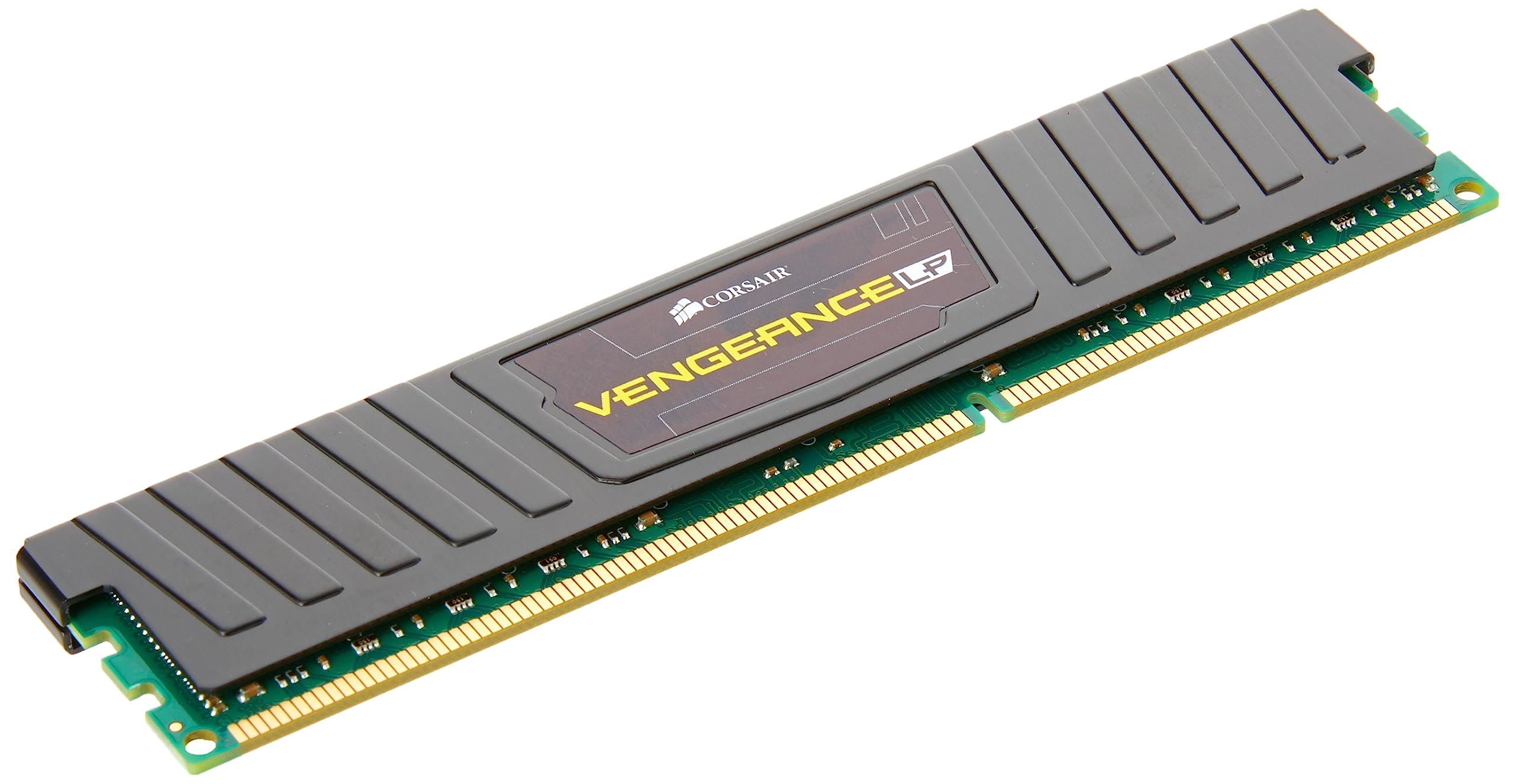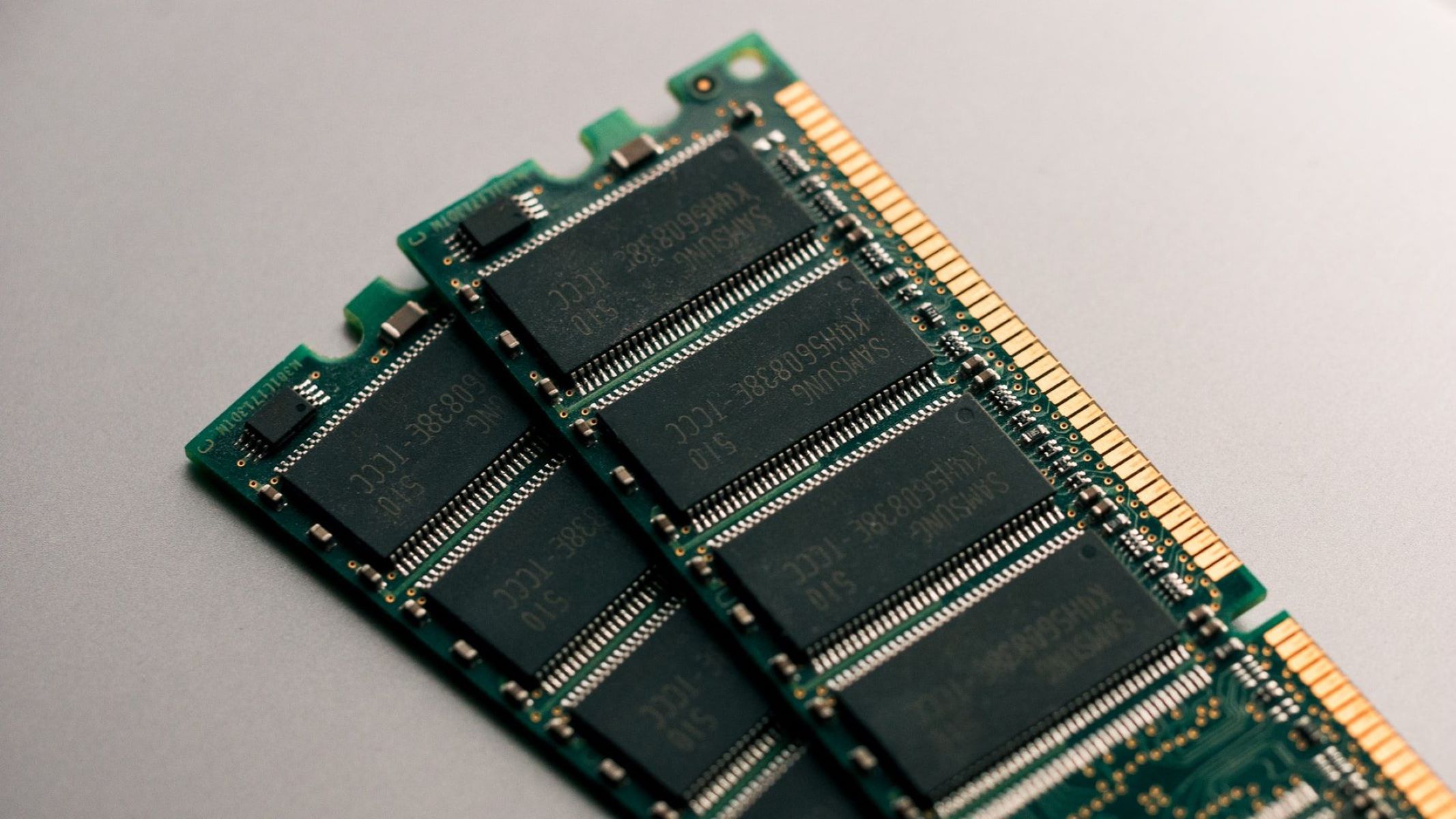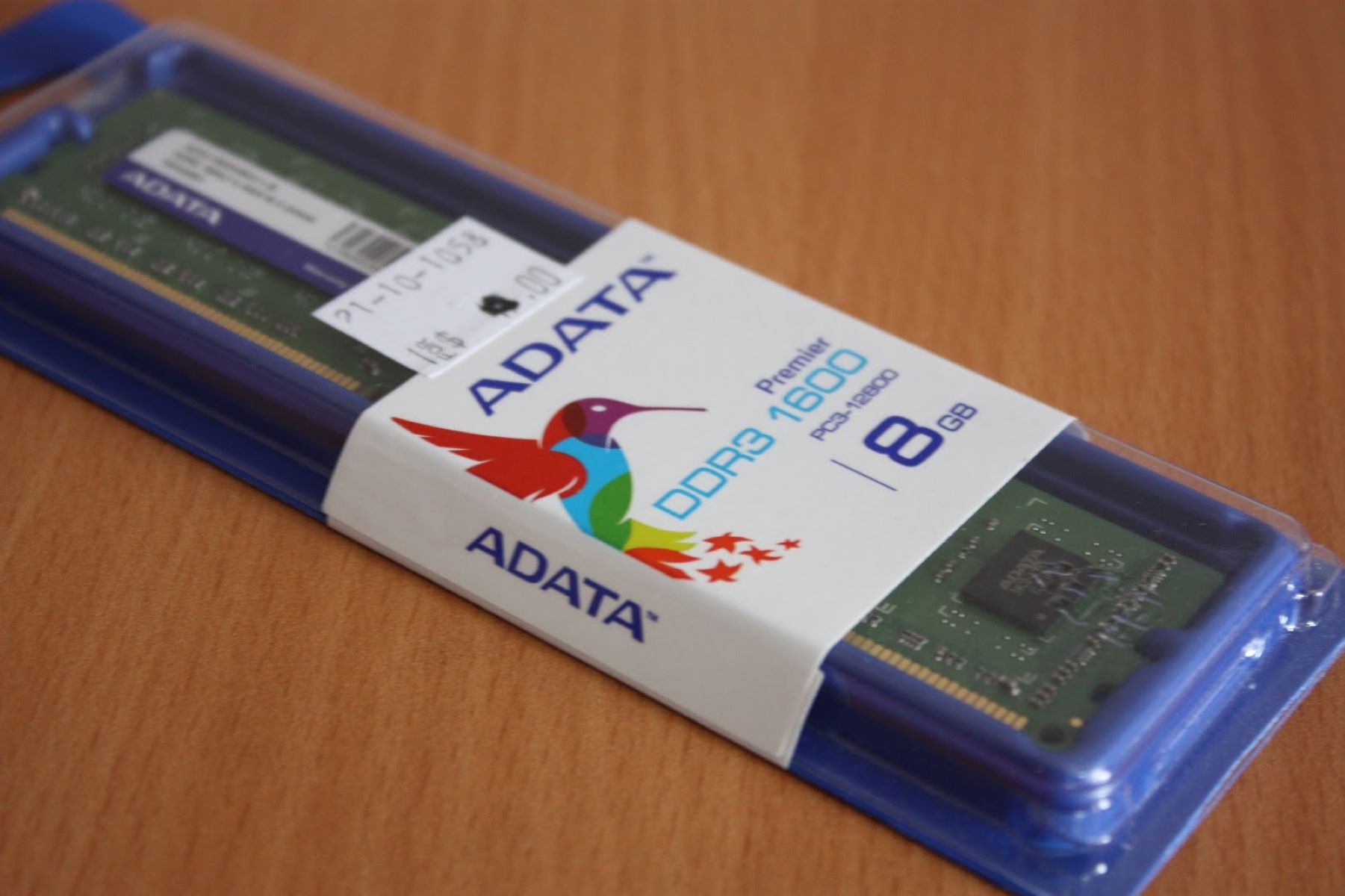Introduction
Welcome to the world of computer hardware! When it comes to understanding the intricacies of a computer, one component that often puzzles many individuals is RAM, or Random Access Memory. RAM plays a crucial role in the performance and functionality of a computer, making it essential to have a basic understanding of its specifications.
In this article, we will delve into the specific aspect of RAM that confuses many people: the number of pins. RAM is not a one-size-fits-all component; different types of RAM modules exist based on various factors, such as the type of computer you have and the generation of RAM technology being used. Each specific type of RAM has a unique number of pins that determine its compatibility with your computer.
If you have ever wondered how many pins your RAM module has, you have come to the right place. We will walk you through what RAM is, why it is important in a computer, the different types of RAM, and most importantly, we will focus on the widely used DDR4 RAM and its corresponding number of pins.
To unravel the mystery of RAM pins, read on and gain a clear understanding of this crucial computer component!
What is RAM?
RAM, or Random Access Memory, is a critical component of a computer’s hardware. It is a type of memory that the computer uses to temporarily store data that it needs to access quickly. Unlike long-term storage devices such as hard drives or solid-state drives, RAM provides fast and immediate access to data, allowing the computer to perform tasks efficiently and smoothly.
Think of RAM as the computer’s short-term memory. It is responsible for holding the data that the computer is actively using at any given moment. When you open an application or a file, it gets loaded into RAM, and the computer can access it quickly while you work on it. The more RAM your computer has, the more data it can store at once, resulting in improved multitasking capabilities and overall performance.
RAM operates at much higher speeds than other storage devices because it is directly connected to the computer’s processor via a memory controller. This direct connection enables rapid data transfer between the RAM and the CPU, minimizing delays and bottlenecks that can hinder performance.
It’s important to note that RAM is volatile memory, meaning it requires a constant power supply to retain data. When you shut down your computer, any data stored in RAM is lost. This is why it is crucial to save your work and shut down your computer properly to ensure that data is transferred to long-term storage devices for permanent storage.
Overall, RAM is an essential component of a computer, providing the necessary speed and capacity to handle the demands of modern-day computing. Without sufficient RAM, your computer may experience slowdowns, freezing, or even crashes when attempting to handle multiple tasks simultaneously.
Why is RAM important in a computer?
RAM plays a crucial role in the overall performance and functionality of a computer. Here are some reasons why RAM is important:
1. Speed: RAM provides fast and immediate access to data, allowing the computer to retrieve and process information quickly. With more RAM, the computer can store and access larger quantities of data, resulting in smoother multitasking, faster program launches, and quicker response times.
2. Multitasking: RAM allows the computer to run multiple programs simultaneously without compromising performance. When you have several applications open, each application requires a certain amount of RAM to function optimally. Insufficient RAM can lead to sluggishness, as the computer constantly swaps data between RAM and the hard drive, causing delays and hindering multitasking capabilities.
3. Gaming and Multimedia: Gamers and multimedia enthusiasts, such as video editors or graphic designers, require ample RAM to handle resource-intensive tasks. Games and multimedia applications often require more RAM to store and process large amounts of graphical data or high-resolution images and videos. Insufficient RAM can result in reduced frame rates, longer loading times, and overall decreased performance.
4. Virtualization: RAM is crucial for virtualization, which allows users to run multiple operating systems or virtual machines on a single physical machine. Each virtual machine requires its own dedicated RAM to function properly. Insufficient RAM can lead to slow and unresponsive virtual machines, hampering productivity and hindering the effectiveness of virtualization.
5. Future-Proofing: As software and applications become more advanced and resource-intensive, the demand for RAM increases. Investing in sufficient RAM ensures that your computer can handle upcoming software updates and new technologies, prolonging the usable life of your system.
In summary, RAM is essential in a computer as it directly affects its performance, responsiveness, and ability to handle multiple tasks. Whether you’re a casual user, professional, or gamer, having adequate RAM is crucial to enjoying a smooth and efficient computing experience.
Different types of RAM
There are several types of RAM available in the market, each with its own specifications and compatibility requirements. Here are some of the most common types:
1. DDR (Double Data Rate) RAM: DDR RAM was the standard type of RAM for many years. It has gone through several iterations, including DDR2, DDR3, and the latest version, DDR4. DDR RAM operates at higher speeds compared to its predecessor, SDRAM (Synchronous Dynamic RAM), resulting in improved performance.
2. DDR2 RAM: DDR2 RAM is an older version of DDR RAM. It offers faster data transfer rates than DDR RAM and is backward compatible with DDR motherboards. However, it is slower and less efficient than DDR3 and DDR4 RAM modules.
3. DDR3 RAM: DDR3 RAM is faster and more power-efficient compared to DDR2 RAM. It offers increased bandwidth and higher clock speeds, resulting in improved overall performance. DDR3 RAM is widely used in both desktop and laptop computers.
4. DDR4 RAM: DDR4 RAM is the latest and most advanced type of RAM currently available. It offers even higher speeds, lower power consumption, and increased memory density compared to DDR3 RAM. DDR4 RAM is the preferred choice for modern computers as it offers improved performance and future-proofing.
5. DDR5 RAM (upcoming): DDR5 RAM is the next-generation RAM technology that is currently in development and is expected to be released in the near future. DDR5 RAM is expected to offer significant performance improvements over DDR4, including higher speeds and larger memory capacities.
It’s important to note that the compatibility of RAM modules varies depending on the motherboard and CPU architecture. Before purchasing RAM, it’s crucial to check the compatibility requirements specified by the motherboard manufacturer.
Each type of RAM module has a different number of pins, which determine its physical connection and compatibility with a specific motherboard. Understanding the number of pins is essential when upgrading or replacing RAM modules in your computer.
In the next section, we will focus on DDR4 RAM and its specific number of pins, as it is one of the most commonly used and widely available types of RAM in modern computers.
DDR4 RAM explained
DDR4 RAM (Double Data Rate 4 Random Access Memory) is the fourth generation of DDR RAM technology. It was introduced as an upgrade to DDR3 RAM, offering various improvements in terms of speed, efficiency, and capacity.
One of the notable advancements in DDR4 RAM is the increase in memory module density. DDR4 RAM modules can hold more memory chips on a single module compared to DDR3 RAM, allowing for higher overall memory capacities. This increased density enables computers to handle resource-intensive tasks more efficiently and supports the use of memory-hungry applications such as video editing software or virtual machines.
In addition to higher memory capacity, DDR4 RAM also operates at higher speeds, resulting in faster data transfer rates. This increased speed, along with other architectural enhancements, offers improved system performance and faster application loading times. DDR4 RAM also brings lower power consumption compared to its predecessor, leading to improved energy efficiency and longer battery life for laptops and other portable devices.
DDR4 RAM modules feature additional enhancements such as improved error checking and correction (ECC) capabilities, which help to detect and correct memory errors. This is especially crucial in server environments where data integrity is of the utmost importance.
Another feature of DDR4 RAM is its increased frequencies or clock speeds. DDR4 RAM modules are available in various speed ratings, typically denoted as DDR4-XXXX, where the “XXXX” represents the frequency in megahertz (MHz). Higher frequency RAM modules can provide faster data access, resulting in improved system performance.
Overall, DDR4 RAM offers significant performance improvements compared to earlier generations of RAM technology. It provides increased memory capacity, faster data transfer rates, improved energy efficiency, and enhanced error correction capabilities.
Next, we will explore how the number of pins on a DDR4 RAM module affects its compatibility with a computer system.
How many pins does DDR4 RAM have?
DDR4 RAM modules typically have 288 pins. These pins are located on the bottom side of the module and are responsible for establishing a physical and electrical connection with the motherboard. The number of pins on a DDR4 RAM module is crucial to ensure compatibility with the memory slots on the motherboard.
The 288-pin configuration of DDR4 RAM is different from its predecessors, such as DDR3, which had 240 pins. This change in pin count is due to the different physical dimensions and architecture of DDR4 modules compared to DDR3 modules.
It’s important to note that the number of pins may vary depending on the specific form factor of the DDR4 RAM module. The most common form factor for desktop computers is the DIMM (Dual In-Line Memory Module) form factor, which typically uses 288 pins. However, there are also smaller form factors, such as SO-DIMM (Small Outline DIMM) modules, used in laptops and compact systems, which may have a different pin count.
When purchasing DDR4 RAM, it is crucial to ensure compatibility with your motherboard. Not all motherboards support DDR4 RAM, and even if they do, they may have specific limitations regarding the maximum capacity and clock speed supported.
To determine the compatible DDR4 RAM for your system, consult your motherboard’s specifications or user manual. These resources will provide information on the type of DDR4 RAM supported, the maximum capacity per slot, and the recommended clock speeds. Ensure that the DDR4 RAM you choose matches the specifications recommended by the motherboard manufacturer.
Now that you have an understanding of the number of pins DDR4 RAM modules have, we will explore the factors to consider when determining how many pins your RAM requires in the next section.
Factors to consider when determining the number of pins
When determining the number of pins required for your RAM module, there are several important factors to consider:
1. Motherboard specifications: The first and most crucial factor is to ensure compatibility with your motherboard. Different motherboards support different types of RAM modules and have specific requirements regarding the number of pins. Consult your motherboard’s specifications or user manual to determine the supported RAM types and pin counts for each memory slot.
2. Type of RAM: Different types of RAM, such as DDR3 or DDR4, have varying pin configurations. Understanding the type of RAM your system supports will help determine the number of pins required. Ensure that the RAM type you choose matches the specifications recommended by your motherboard manufacturer.
3. Form factor: Another important consideration is the form factor of your RAM module. Most desktop systems use the DIMM (Dual In-Line Memory Module) form factor, which typically has 288 pins for DDR4 RAM. However, smaller form factors like SO-DIMM (Small Outline DIMM) are commonly used in laptops and compact systems and may have a different pin count.
4. Memory capacity and configuration: The number of pins required can depend on the memory capacity and configuration you desire. Higher-capacity RAM modules may have more pins to accommodate the increased memory chips. Additionally, certain memory configurations, such as dual-channel or quad-channel setups, may require specific pin configurations to optimize performance.
5. Clock speed and voltage: RAM modules also have different clock speeds and voltage requirements, which may influence the number of pins. It’s important to ensure that the RAM module you choose matches the supported clock speed and voltage requirements specified by your motherboard.
6. Budget: Lastly, consider your budget when selecting RAM modules. Higher-end or specialized RAM modules may come with different pin configurations, which can affect the overall cost. Ensure that the RAM you choose falls within your budget while still meeting the necessary requirements for your system.
By considering these factors, you can ensure that the RAM module you choose has the correct number of pins and is compatible with your motherboard, allowing for optimal performance and stability.
In the next section, we will address some common misconceptions about RAM pins and clarify any confusion surrounding this topic.
Common misconceptions about RAM pins
When it comes to RAM pins, there are several misconceptions that can cause confusion. Let’s address some of the most common misconceptions and clarify the facts:
1. More pins mean better performance: One common misconception is that a higher number of pins on a RAM module automatically translates to better performance. The number of pins primarily relates to the physical connection and compatibility with the motherboard, not the performance. Factors such as memory capacity, clock speed, and latency have a more significant impact on RAM performance.
2. Mixing RAM modules with different pin counts: Another misconception is that you can mix RAM modules with different pin counts. In most cases, this is not possible as different pin configurations indicate different types or generations of RAM, and they are not compatible with each other. It’s always recommended to use RAM modules with matching pin counts for optimal compatibility and stability.
3. Increasing the number of pins improves compatibility: Some people believe that increasing the number of pins on a RAM module can improve compatibility with a wider range of motherboards. However, compatibility primarily depends on the specific type of RAM (e.g., DDR4) and the corresponding pin configuration specified by the motherboard manufacturer. Increasing the number of pins beyond what is supported by the motherboard will not enhance compatibility.
4. Pins are meaningless for performance: While the number of pins does not directly affect performance, it is still a critical aspect to consider for compatibility. Your chosen RAM should have the correct number of pins to fit into the memory slots on your specific motherboard. Using RAM with an incompatible pin configuration can result in the system failing to recognize or properly utilize the RAM module.
5. All DDR4 RAM modules have the same number of pins: While most DDR4 RAM modules have 288 pins, it doesn’t mean that all DDR4 RAM modules have the same pin count. There are specialized variants or form factors, such as ECC (Error-Correcting Code) or registered RAM, which may have different pin configurations. It’s important to choose the appropriate RAM module based on the specific requirements of your system.
It’s crucial to separate fact from fiction when it comes to RAM pins to make informed decisions when upgrading or purchasing RAM for your computer. Understanding the correct information will ensure optimal compatibility, stability, and performance.
Now that we have debunked the common misconceptions, let’s conclude our exploration of RAM pins in the next section.
Conclusion
RAM is a critical component in any computer system, and understanding its specifications, including the number of pins, is essential for compatibility and optimal performance. We have explored the world of RAM, from its basic function as a fast-access storage to its importance in multitasking, gaming, and virtualization.
We discussed the different types of RAM, focusing on DDR4 RAM, which is widely used in modern computers. DDR4 RAM offers significant improvements in terms of speed, efficiency, and capacity compared to its predecessors.
The number of pins on a DDR4 RAM module is typically 288. However, it is crucial to consider the specific requirements of your motherboard and the type of RAM module (e.g., DIMM or SO-DIMM) you need for your system.
We also highlighted the importance of considering various factors when determining the number of pins required for your RAM, such as motherboard compatibility, RAM type, form factor, memory capacity, and clock speed.
Additionally, we addressed common misconceptions surrounding RAM pins, emphasizing the importance of accurate information for making informed decisions about RAM upgrades or purchases.
By understanding the role of RAM pins and considering the necessary factors, you can ensure that the RAM you choose is compatible with your system, allowing for improved performance, smoother multitasking, and enhanced overall functionality.
Now that we have explored the world of RAM pins, you are equipped with the knowledge to make informed decisions and navigate the complexities when it comes to selecting and upgrading RAM for your computer.







